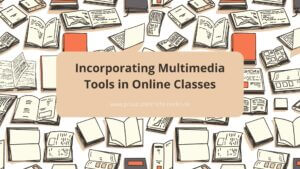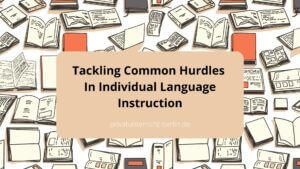Your Language Journey, Your Way: Start with a Private Tutor

Exploring Cultural Context With Language Guides
Welcome to the world of cultural context and language guides! As a writer and focus, it is my passion to help people understand the nuances of different cultures through their languages.
Language is more than just words on a page or sounds coming from our mouths; it reflects our history, values, beliefs, and ways of life.
Communication with people from different backgrounds has become more critical in today’s globalized world. Whether you are traveling abroad for business or pleasure, living in a multicultural community, or simply interested in learning about other cultures, understanding the cultural context behind a language can make all the difference in your interactions.
This article will explore how language guides can deepen your understanding of cultural context and enhance cross-cultural communications. So let’s dive in!
Table of Contents
The Power Of Language In Cultural Understanding
Humans use language to express their thoughts, emotions, and ideas. A language is a complex tool that has the power to unite or divide us based on how it’s used.
The nuances of language are vital in bridging cultural gaps because they give insight into different ways of thinking, behaving, and communicating.
The importance of language nuances must be addressed when it comes to understanding culture. Learning a new language is not just about memorizing vocabulary or grammar rules but also understanding the subtle differences in meaning between words or phrases.
These nuances are essential in conveying cultural values and attitudes toward specific topics. For example, some cultures may value directness, while others might prefer indirect communication styles to avoid conflict.
Understanding these nuances can help prevent misunderstandings and promote empathy and respect for other cultures.
Unpacking Cultural Context Through Language Guides
Cross-cultural communication can be challenging, particularly when it comes to understanding cultural nuances. These nuanced differences in social behavior and language usage can lead to misunderstandings or even offense if not adequately addressed. However, with the help of language guides, navigating these complexities becomes much more accessible.
Language guides provide valuable insight into a culture’s customs and traditions and their unique way of communicating. They offer guidance from appropriate greetings to nonverbal cues that may carry significant meaning. By utilizing these resources, individuals can better appreciate different cultures and avoid potential miscommunications. Ultimately, this leads to more effective cross-cultural communication and fosters greater empathy between people of diverse backgrounds.
Imagine walking down the bustling streets of Tokyo during rush hour:
- The smell of sizzling yakitori wafts through the air.
- People bow respectfully as they make eye contact with each other.
- Neon lights illuminate towering skyscrapers in every direction.
Or picture yourself strolling along the winding alleyways of Marrakech:
- Brightly colored textiles hang overhead like a canopy.
- Vendors call out in Arabic and French, offering fragrant spices and handmade goods.
- Outside cafes, groups gather around steaming pots filled with couscous or tagine dishes.
By using language guides effectively, individuals can fully immerse themselves in new environments such as these while showing respect for local customs. The following section will explore some tips for doing just that.
Tips For Using Language Guides Effectively
When learning a new language, the best strategy is to use language guides to help you get familiar with the culture, common phrases, and etiquette.
Knowing the key phrases used in daily conversation and understanding the cultural context in which they are used is critical to succeeding.
Trying new things and staying open-minded to different customs will also help you become more comfortable with the language you’re learning!
Learning Strategies
Let’s imagine you’re traveling to a foreign country and don’t speak the language. You might feel overwhelmed or anxious about communicating effectively, but fear not!
Learning strategies are critical when using language guides. Interactive exercises can help you practice speaking and listening skills, while visual aids like maps and pictures provide context for new vocabulary words.
As a cultural context and language guide writer, I suggest using these tools to enhance your learning experience. Don’t be afraid to make mistakes – they’re essential to the learning process!
Remember that effective communication is not just about what you say but how you say it. By incorporating these tips into your language guides, you’ll be well on your way to confidently navigating any culture quickly.
Common Phrases
Now that we’ve covered the importance of learning strategies when using language guides let’s take a closer look at everyday expressions.
These common phrases are essential for navigating daily life in any foreign country and can vary greatly depending on regional variations.
As a cultural context and language guide writer, I recommend taking some time to familiarize yourself with these phrases before your trip.
Not only will it make communication more accessible, but it also shows respect for the local culture.
By incorporating these tips into your language guide, you’ll be well-equipped to navigate any new environment quickly and confidently.
Cultural Etiquette
Now that we’ve covered the importance of mastering everyday expressions, discussing cultural etiquette norms when communicating with locals is crucial.
Communicating effectively is about using the right words and understanding cultural values and expectations.
As a language guide writer, I encourage you to consider cross-cultural communication strategies such as body language, tone of voice, and appropriate gestures to show respect for local customs.
This will help create positive interactions and avoid misunderstandings arising from differences in behavior or attitudes.
By incorporating these tips into your language guides, you’ll be well-equipped to navigate any new environment confidently while showing appreciation for the culture you’re visiting.
Real-Life Examples Of Using Language Guides To Navigate Cultural Differences
As language guide writers, we must help individuals navigate the complex web of cultural context. However, this task can be challenging as one may encounter various language guide challenges when trying to overcome cultural barriers.
For instance, understanding nonverbal cues and body language in different cultures can be tricky for foreigners. Overcoming these cultural barriers requires patience, open-mindedness, and an eagerness to learn about other people’s customs and beliefs.
One way to achieve this is by incorporating real-life examples into language guides. By doing this, readers will be able to understand how specific phrases or behaviors may be perceived differently across cultures. Real-life examples also add a personal touch and make learning more engaging for the audience.
Incorporating cultural context into language learning has numerous benefits. It helps individuals communicate effectively with people from diverse backgrounds while fostering mutual respect and understanding. Furthermore, it provides insight into the nuances of different languages and cultures, enhancing communication skills.
As a result, we encourage all aspiring linguists to embrace diversity and incorporate cultural context into their language studies- your efforts will be noticed!
Benefits Of Incorporating Cultural Context Into Language Learning
Incorporating cultural context into language learning can have numerous benefits. Firstly, it helps individuals build intercultural competence, which is understanding and appreciating different cultures. This leads to better cross-cultural communication, as one can communicate effectively with people from diverse backgrounds.
Secondly, incorporating cultural context in language learning enhances understanding of the culture associated with that particular language. For instance, learning Spanish goes beyond just acquiring fluency in speaking the language and gaining an appreciation for Hispanic culture. When people understand and appreciate culture, they will likely be more respectful towards its members and their way of life.
In summary, by incorporating cultural context into language learning, learners gain skills that enable them to communicate effectively across cultures while enriching their knowledge of other cultures. Therefore, if you want to learn a new language or improve your proficiency in a foreign tongue, remember that it’s not just about vocabulary and grammar rules; immerse yourself in its cultural context too!
Frequently Asked Questions
Which Specific Language Guides Are Recommended For Exploring Cultural Context?
When it comes to effective cross-cultural communication, having the right language guide is essential. But with so many options available, how do you know which one(s) are best for exploring cultural context?
After careful research and consideration, we recommend several specific language guides with proven invaluable resources. These include [insert names of recommended guides], each offering unique insights into the nuances of different cultures and languages.
By using these guides as tools for understanding, you can gain a deeper appreciation for our world’s complexities while enhancing your ability to communicate effectively across borders and boundaries. So whether you’re traveling abroad or simply looking to broaden your horizons, consult these language guide recommendations for a richer, more meaningful experience.
How Can Language Guides Be Used To Understand The Nuances Of Nonverbal Communication In Different Cultures?
To truly understand cross-cultural communication, it’s not enough to learn the words and grammar of a new language. Body language interpretation is also crucial for effective communication with people from different cultures.
Language guides can be incredibly useful in this regard, as they provide insights into the nuances of nonverbal communication in different cultures. For example, did you know that nodding your head up and down could mean ‘no’ in some countries? Or that making direct eye contact may be disrespectful or aggressive in others?
By studying these subtle differences through language guides, we can break down cultural barriers and communicate more effectively across borders.
Are There Any Potential Drawbacks Or Limitations To Relying Solely On Language Guides For Cultural Understanding?
When relying solely on language guides for cultural understanding, potential limitations should be considered.
While language is an essential aspect of culture, it only sometimes provides a comprehensive picture of the nuances and complexities within a society.
Alternative resources such as personal experiences, conversations with locals or experts in the field, and more profound research into historical and social contexts can offer a more well-rounded understanding of a particular culture.
As a cultural context and language guide writer, it is essential to acknowledge these potential drawbacks and encourage individuals to seek additional sources when exploring new cultures.
By doing so, one can gain a richer appreciation for the diversity of our world.
How Can Language Guides Be Adapted For Use In Different Settings, Such As Business Meetings Or Social Interactions?
To communicate effectively in cross-cultural settings, it is crucial to understand the nuances of cultural etiquette. Language guides can serve as valuable resources for navigating these differences, but they must be adapted for different settings, such as business meetings or social interactions.
Effective communication strategies rely on understanding language, nonverbal cues, and cultural norms. For example, in some cultures, direct eye contact may be a sign of respect; in others, it may be considered rude or confrontational.
By adapting language guides to specific contexts and being mindful of cultural differences, individuals can improve their ability to navigate cross-cultural interactions confidently and efficiently.
Are There Any Cultural Contexts Or Situations In Which Language Guides May Not Be Applicable Or Appropriate?
Language guide limitations should be addressed due to cultural context misconceptions. While language guides can be beneficial in many situations, there may be some contexts or environments where they do not apply or could even be seen as inappropriate.
For example, relying solely on a language guide could lead to misunderstandings or offenses in highly formal settings like courtrooms or diplomatic meetings.
Users of these guides need to understand the nuances and complexities of different cultural contexts before deciding whether or not a language guide is appropriate for their situation.
Conclusion
In conclusion, language guides can be valuable tools for exploring the cultural context and understanding the nuances of nonverbal communication. However, it is vital to remember that they may have limitations and should not be relied upon solely for cultural understanding.
It is also essential to adapt language guides for different settings, such as business meetings or social interactions.
As a writer of cultural context and language guides me, I have seen firsthand how coincidence can add depth and complexity to the understanding of a culture. By examining coincidences within a culture’s history, literature, and daily life, one can gain a deeper appreciation for their unique beliefs and values.
Language guides are just one piece of the puzzle when navigating cultural differences. Still, with an open mind and willingness to learn, they can be a valuable resource in bridging connections between people from different cultures.



